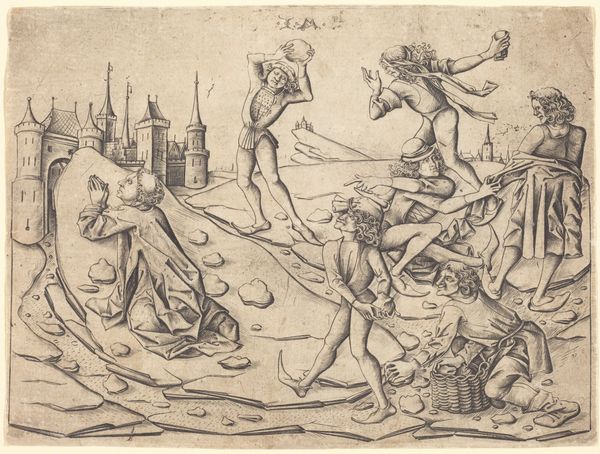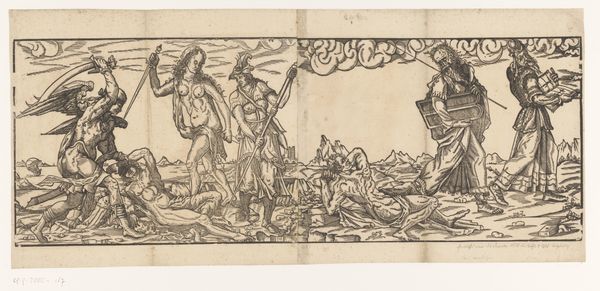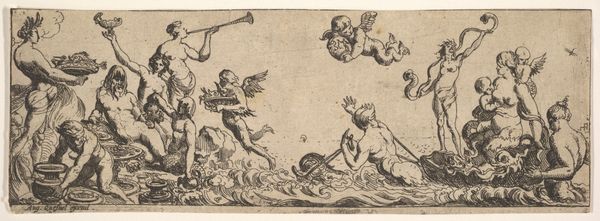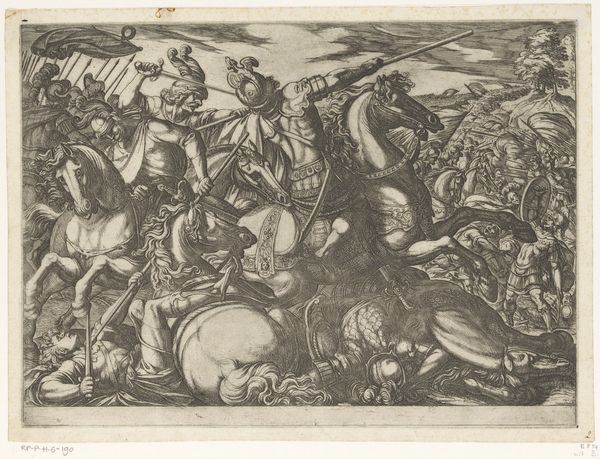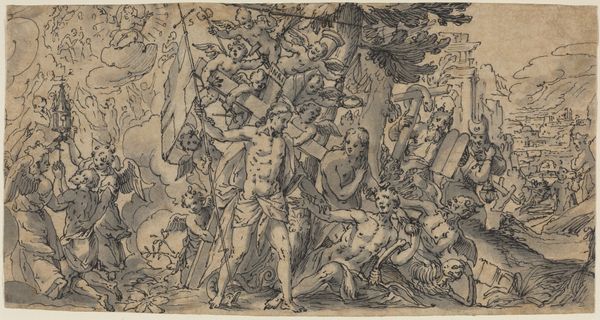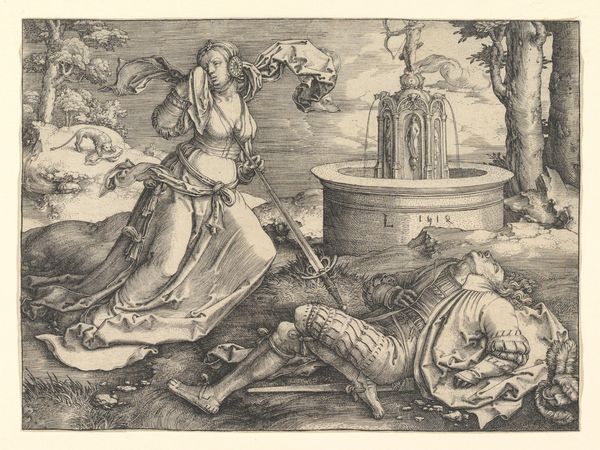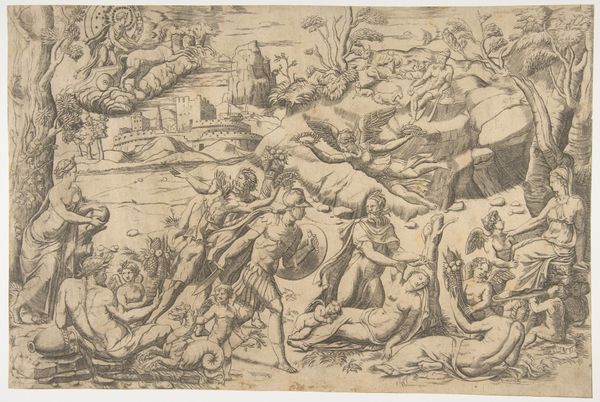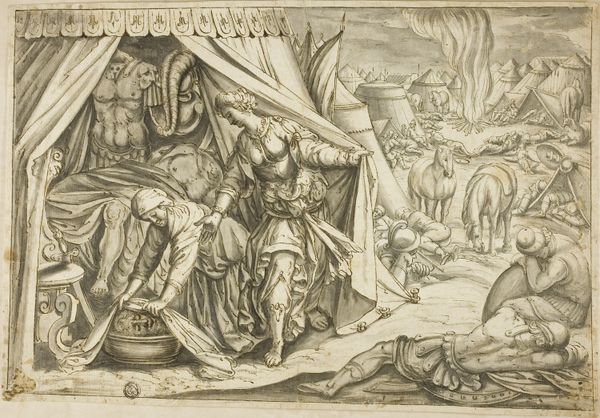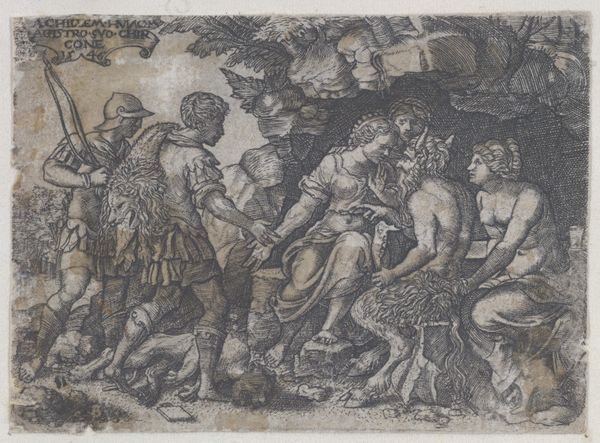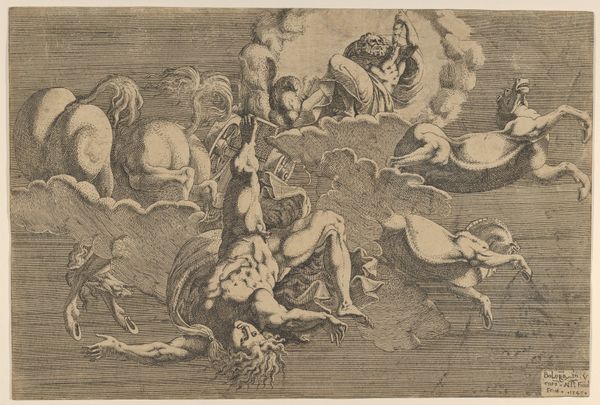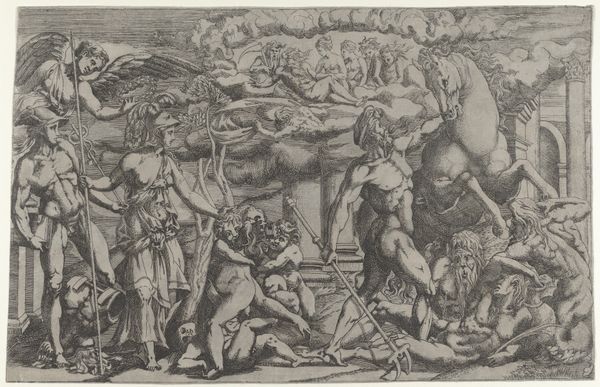
print, engraving
#
ink drawing
#
medieval
#
narrative-art
# print
#
pen sketch
#
figuration
#
history-painting
#
engraving
Dimensions: sheet (trimmed within plate mark): 14.8 x 19.3 cm (5 13/16 x 7 5/8 in.)
Copyright: National Gallery of Art: CC0 1.0
Curator: Welcome. Today, we are looking at "The Stoning of Saint Stephen," an engraving made around 1470 by Israhel van Meckenem. The piece depicts exactly what the title suggests. Editor: My first thought is that it’s visually chaotic, almost frantic. So many figures caught in motion, and yet there’s also a striking stillness in Stephen’s posture amidst all the violence. Curator: The composition definitely reflects the intensity of the scene. Consider how Meckenem positions Stephen, kneeling and praying on the lower left corner, in contrast with the frenzied figures surrounding him. It mirrors the religious stories of persecution, martyrdom, and faith standing resolute. Editor: Absolutely. It also strikes me how individualized the figures are despite the limitations of the medium. There's a whole range of emotions expressed—anger, zealotry, even a kind of detached curiosity, each feeding the narrative of mob violence, especially in the Middle Ages. But seeing Stephen kneeling there peacefully, is a reminder of all the violence the Catholic church perpetuated and inflicted throughout the centuries. Curator: Right, and engravings at this time played a vital role in disseminating religious imagery. So many would have been exposed to these prints and learned the story and associated meaning of the saint through artwork just like this. The themes, here, would certainly include faith, martyrdom, and, perhaps less overtly, the power of belief systems within society. Editor: And maybe we can even consider the print's production, it makes me think about the artist's position and biases, even within the depiction of historical or biblical scenes like this. Does this serve as straightforward religious instruction? Or does it also implicitly legitimize particular power structures or perspectives of the era? It prompts us to question who gets to tell these stories and whose voices are amplified. Curator: Those are such crucial questions to consider, and ones that reflect a lot of current discourses about how historical representations play such an important part in shaping our understanding of society. It adds a layer of modern contemplation onto a religious image with strong Medieval provenance. Editor: I completely agree. There's a strange dichotomy to this. The technical skill of van Meckenem juxtaposed with its socio-political commentary creates such a potent visual encounter, one that certainly stays with you.
Comments
No comments
Be the first to comment and join the conversation on the ultimate creative platform.
